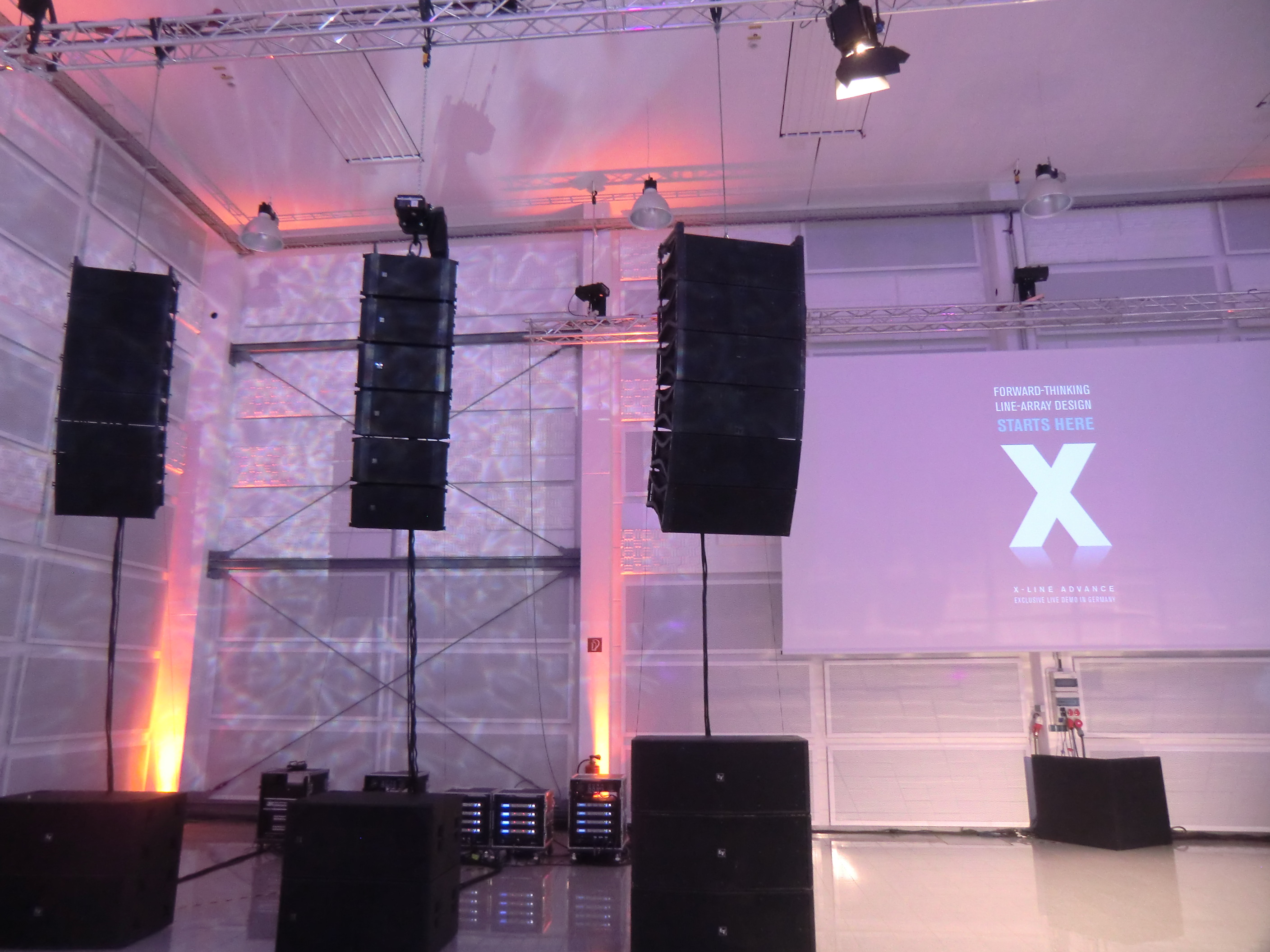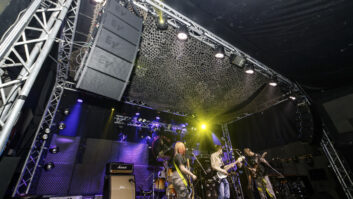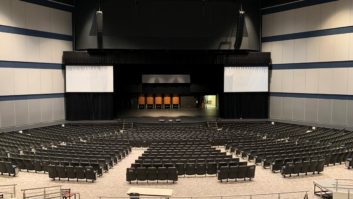
Electro-Voice hasn’t launched a line array since 2008, having focused its efforts in installation speakers primarily on the ZLX series. So we were delighted to be invited to visit the company’s European HQ in Straubing, Germany, to hear a demo of the X-Line Advance a couple of weeks before Prolight + Sound.
E-V talked to its customers when setting out to design its next generation of line arrays. The message came back that they wanted something that was louder than the previous generation, but also smaller and lighter. The result is the X-Line Advance, which at launch comprises three speaker models: the X1-212/90, the X2-212/90 and the X12-128 subwoofer.
Smaller cabinet
The X1 is designed for clubs, entertainment venues and houses of worship, while the X2 is for larger venues, stadiums and touring. The models are outwardly similar – they are two-way speakers with basically the same cabinet – but the HF drivers, woofers and Hydra waveguides are specific to each model.
Making the cabinet smaller prompted the move from a three-way to a two-way configuration, but, explained global product manager Guillermo Wabi, this also makes it harder to produce low frequencies. The E-V engineering team therefore added two large ports on the side of the cabinet, to allow the woofer greater motion. However, this approach runs the risk of generating unwanted resonance; through prototyping (including the use of 3D printers) and testing, and the use of a bulk moulding compound that is stronger than the wood of the cabinet, this phenomenon was avoided.
To improve mid-range coupling, the engineering team created the Mid-Band Hydra – a multi-aperture waveguide that effectively converts the acoustic behaviour of the 12in woofer into that of a double line of four 3in point sources.
Additionally, Electro-Voice is, said Wabi, one of the few manufacturers that produces its own transducers. The woofer transducers have been designed specifically for line array performance: rather than creating equal amounts of sound energy across the frequency spectrum, these have been built to boost the mid-range because acoustical coupling will “build the low frequency for you, for free”.
Turning to the HF end: on the X1, the 2in ND2R ring-exit titanium compression drivers are coupled to a wavefront-shaping circular Hydra (WCH), to provide uniform pattern control and an extended linear response, while the X2, which features 3in titanium drivers, uses a pair of Advanced PDH Pin Diffraction Hydras for a similar result. “We can pinpoint the audio where we want it and not lose energy,” he said. “The ND6A with Pin Diffraction Hydra creates a much flatter planar wave than previous models, with a more even distribution of energy.”
The X1 and X2, which have peak SPLs of 143dB and 146dB respectively, can be combined with the X12-128 subwoofer, which is the most powerful sub that E-V has ever produced. A dual 18in system, it produces a maximum SPL of 141dB continuous (147dB peak). It has been designed to provide an acoustic match to the X1 and X2.
The X-Line Advance also comes with the LAPS software package (Line Array Prediction Software), which assists with array configuration, rigging and coverage.
Protecting the system
Electro-Voice is mandating that the X1 is to be used with the company’s FIR Drive DSP – which provides FIR EQ, brickwall crossovers, phase correction, anticipation ‘look-ahead’ limiters, and thermal limiters, all in the same software suite. Said Wabi: “We know what the performance of our voice coils is, and we know the point where a 1dB change can produce a 50ºC temperature change and destroy the voice coil. Our thermal limiter protects our system.”
X2 is required to use E-V’s DSP and also its TG7 amplifier. Wabi explained that feedback from tours in the past was that the company’s line arrays did not sound consistent from show to show. On investigation, it turned out that the poor ones were the ones that were using other manufacturers’ DSP and amps. “So we’re taking that control back.” Reaction to this announcement has been predominantly positive, he added.
[brightcove videoid=”4171935657001″ playerid=”3033416250001″ height=”270″ width=”480″]
So, what did it sound like? The demo took place in a large, mostly empty room with a 9m ceiling and space for around 1,000 chairs. The system demonstrated consisted of six X2 cabinets left and right, sometimes augmented by two X12 subs each side. We were encouraged to stand up – as the sound had been optimised at a height of 1.6m, and to walk around to appreciate the 90º horizontal dispersion. We were played a wide variety of music, from light jazz to heavy rock, all of which the system reproduced accurately and powerfully. Of particular note were an indie rock song where every guitar chord made my chest rattle, and a track with a reggae bassline where I swear I could feel my heart dropping inside my body.
The demo also included a side-by-side comparison with the older XLC and XLD line arrays. I could detect a slight difference between the sound of these and the smaller, newer models, but I couldn’t choose a favourite.
One could argue that Electro-Voice has waited longer than it should have done to update its line array offering, but as Wabi said: “We’re back with a vengeance – and this is only the beginning!”







